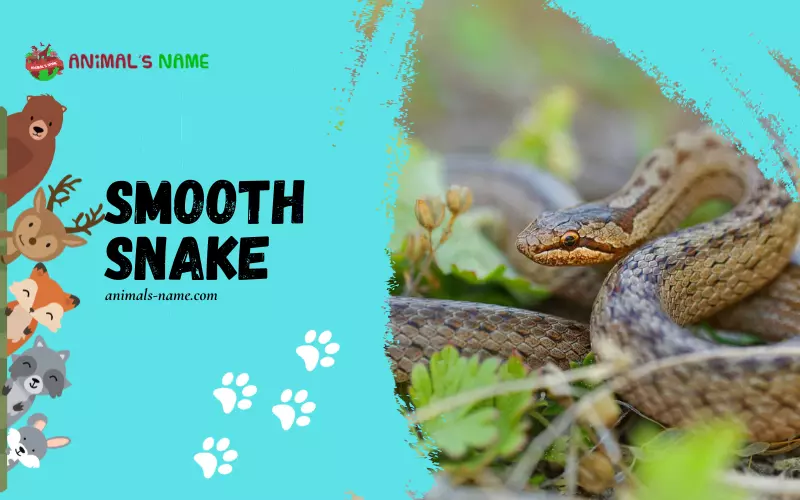Our blog is dedicated to exploring the fascinating world of animals, and today, we will dive into the intriguing topic of the Smooth Snake. These creatures are incredible in their own right, with a rich history and unique characteristics that set them apart. This blog post will examine the Smooth Snake’s history, facts, size, habitat, and classification.
The Smooth Snake, scientifically known as Coronella austriaca, is a non-venomous snake in various parts of Europe. These snakes have been around for a long time, with their ancestors dating back millions of years. Their evolutionary journey is remarkable, as it contributes to our understanding of how different species have adapted and survived.
Measuring around 50 to 70 centimetres, the Smooth Snake is relatively small compared to other snake species. Their slender bodies are covered in smooth scales, giving them their distinct name. These snakes are typically found in grassy habitats, such as heaths and meadows, where they can camouflage themselves among the vegetation and hunt their preferred prey.
In terms of classification, the Smooth Snake belongs to the Colubridae family, which includes a wide range of non-venomous snakes. Within this family, the Smooth Snake falls under the genus Coronella, which comprises similar snake species. Understanding the classification of animals helps us better comprehend their relationships with other species and gain insights into their unique traits.
As we delve further into the world of the Smooth Snake, we will unearth fascinating facts about their behaviour, diet, and more. Stay tuned to our blog for more exciting insights into the animal kingdom. And don’t forget, we already have an article featuring over 155 animals’ names, so be sure to check it out if you’re interested in exploring even more of the amazing creatures that share our planet!
History of Smooth Snake

The smooth snake is a fascinating creature that has been a part of the animal world for a long time. Its history can be traced back to prehistoric times, with evidence of its existence in fossils dating back millions of years. This suggests that the smooth snake has survived and adapted to its environment significantly.
During ancient times, the smooth snake was seen in various cultures as a symbol of wisdom and healing. It was often associated with rebirth and regeneration, as it sheds its skin periodically. In some cultures, it was revered and believed to possess special powers. The smooth snake has also been an essential part of folklore and mythology in many regions of the world.
As time passed, the smooth snake continued to be admired and studied by scientists. They were curious about its behaviour, habitat, and unique physical characteristics. Scientists discovered that the smooth snake is a cold-blooded reptile, which means its body temperature depends on the environment. They also uncovered that it is a non-venomous snake, relying on its powerful jaws and constriction to catch and subdue its prey.
Unfortunately, the smooth snake faced significant challenges with the advent of human civilization and urbanization. Habitat loss due to the destruction of forests and wetlands has resulted in a decline in their population. Additionally, they often fall victim to road accidents and are sometimes illegally collected for the pet trade. These threats have placed the smooth snake on the endangered species list.
The smooth snake has a long and rich history that spans millions of years. It has been revered as a symbol of wisdom and healing in various cultures and has captured the curiosity of scientists. However, the smooth snake now faces critical challenges due to human activities, placing it in danger of extinction. Efforts must be made to protect and conserve this precious reptile to ensure its survival for future generations.
Importance of Smooth Snake
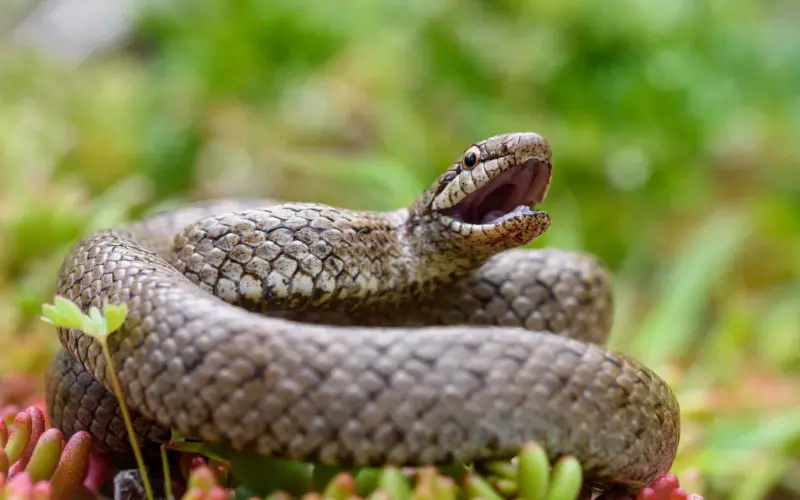
The Smooth Snake is an essential animal for many reasons. First, it plays a crucial role in maintaining the balance of nature. As a predator, it helps control the population of small animals like rodents and frogs. By eating these creatures, the Smooth Snake helps keep their numbers in check and prevents them from overwhelming their habitats. This is important because if these smaller animals were to become too numerous, they could cause problems for other animals and even humans.
Secondly, the Smooth Snake is a valuable indicator of the environment’s health. It is susceptible to changes in its surroundings, especially the quality of its habitat. Therefore, by monitoring the population and behaviour of Smooth Snakes, scientists can gain essential insights into the state of the ecosystem. This allows them to take appropriate actions to protect and preserve the natural environment.
Lastly, the Smooth Snake has intrinsic value as a unique and fascinating creature. It is a part of our natural heritage and contributes to our planet’s biodiversity. Every living species has a unique role in the web of life, and the Smooth Snake is no exception. It has its place and purpose in the grand tapestry of nature, and we should appreciate and protect it for the simple reason that it exists.
Amazing Facts About Smooth Snake
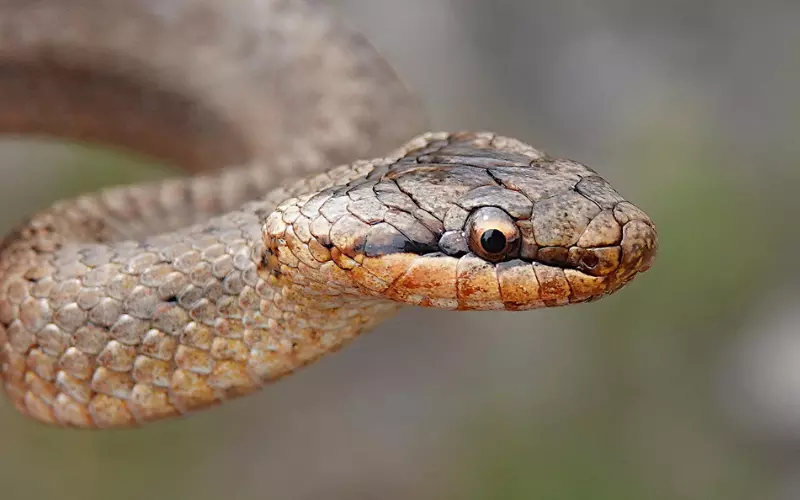
1. Smooth snakes are small and slender reptiles that belong to the snake family.
2. They are native to Europe and can be found in various countries, including the United Kingdom.
3. Smooth snakes are non-venomous, meaning their bites do not harm humans.
4. These snakes have smooth and shiny scales, which give them their name.
5. They have a brownish or greyish colour with dark spots or scars along their bodies.
6. The average length of a smooth snake measures between 40 and 60 centimetres.
7. Smooth snakes are often found in grasslands, heaths, and other open habitats.
8. They are excellent burrowers and spend a lot of time underground.
9. These snakes mainly feed on small reptiles, such as lizards and baby snakes.
10. Smooth snakes are nocturnal, meaning they are active at night and rest during the day.
11. They have a lifespan of around 10 to 15 years in the wild.
12. Unlike some other snake species, smooth snakes give birth to live young instead of laying eggs.
13. Female smooth snakes can give birth to between 5 and 12 baby snakes at a time.
14. They use constriction to subdue their prey, squeezing them tightly and preventing them from breathing.
15. Smooth snakes are a protected species in many countries due to decreasing populations caused by habitat loss and fragmentation, making it essential to conserve their natural habitats.
Can we keep Smooth Snake as our Pet?

Smooth snakes are a type of animal that some people might want to keep as pets. However, knowing that they are wild creatures should not be kept as pets is essential. They are unsuitable for living in our homes because they require particular environments and complicated diets.
Unfortunately, the smooth snake animal is not very common anymore. It is considered to be an endangered species. This means that very few smooth snakes are left in the world, and their numbers continue to decrease. The main reason for their decline is habitat loss and fragmentation caused by human activities, such as urbanization and agriculture. Therefore, it is crucial to protect their remaining habitats and not disturb them by capturing them for pet purposes.
Moreover, keeping an extinct animal as a pet is impossible. Extinction means that a species has completely disappeared from the Earth, and no more living individuals are left. Extinction can occur for various reasons, such as natural disasters, climate change, or human activities like hunting and poaching. Once an animal is extinct, bringing it back or keeping it as a pet is impossible. Therefore, we must protect and conserve endangered species like the smooth snake and prevent them from becoming extinct.
Smooth snakes are endangered animals that should not be kept as pets. It is crucial to understand that wild animals must live in their natural habitats, and our responsibility is to protect them. By learning about endangered species like the smooth snake, we can raise awareness and contribute to their conservation, ensuring that future generations can appreciate the beauty and importance of these animals in their natural environments.
Size of Smooth Snake
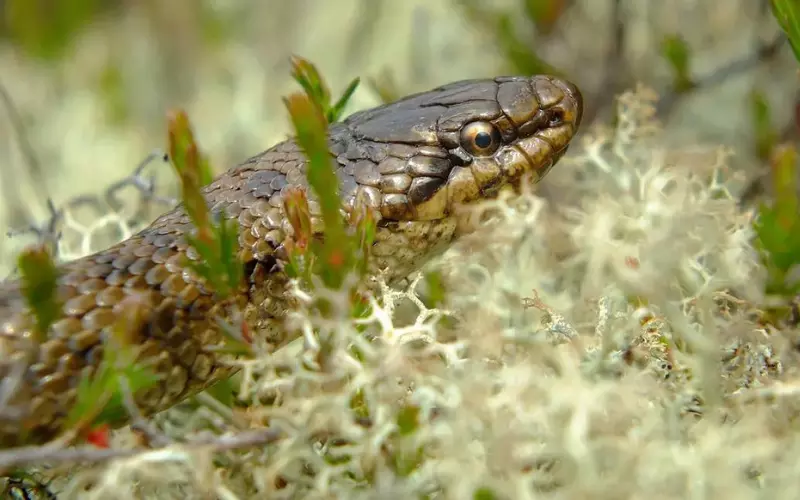
The smooth snake is a small animal found in parts of Europe, particularly in the United Kingdom. It is one of the smallest snakes in the world, measuring between 50 and 70 centimetres in length. To give you a better idea, it is about the same size as a ruler or a school textbook.
Despite its small size, the smooth snake is a fascinating creature. It has a slender body covered in smooth scales, which gives it its name. Its colour can vary from grey to brown, with dark spots along its back. This helps the snake blend in with its surroundings, making it difficult for predators to spot.
The size of the smooth snake is vital for its survival. Being small allows it to hide and manoeuvre easily in its environment, such as grasslands and heathlands. It prefers to live in dense vegetation where it can find food, such as small mammals, lizards, and insects. Its small size also helps it avoid being detected by potential threats, allowing it to stay safe and well-hidden.
The smooth snake is a small and remarkable animal measuring between 50 and 70 centimetres. Its small size enables it to navigate its habitat easily and avoid predators. The smooth snake’s size plays a crucial role in its survival, allowing it to adapt to its environment.
Habitat of Smooth Snake
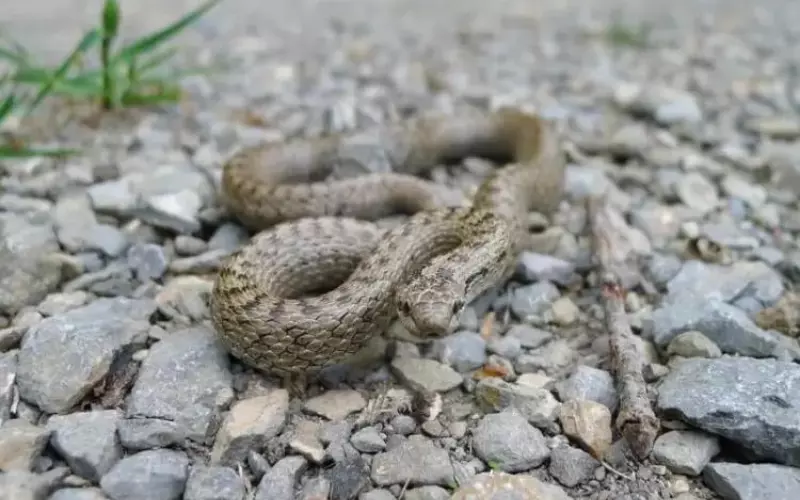
The beautiful smooth snake is an animal in Europe, including the United Kingdom. They can be found in areas with lots of heather and shrubs, such as moorlands, grasslands, and sandy heathlands. These places provide the perfect habitat for the smooth snake to thrive.
The smooth snake is a secretive creature, preferring areas with plenty of hiding spots. They often make their homes in burrows dug by other animals or in dense shrubs and vegetation. These hidden spots help them stay safe from predators and provide a cosy place to rest and seek shelter from the weather.
Being cold-blooded, smooth snakes need a warm environment to regulate their body temperature. They love to bask in the sun and can often be seen sunbathing on rocks or warm sandy patches. These warm spots are essential for their survival, as they help them digest their food and stay active.
The smooth snake is a fascinating creature that lives in areas with lots of heather and shrubs. They prefer habitats such as moorlands, grasslands, and sandy heathlands, where they can find plenty of hiding spots and warmth from the sun. These habitats provide the perfect environment for the smooth snake to live and thrive, keeping them safe and healthy.
Evolution of Smooth Snake

The smooth snake is a fascinating creature that has gone through a remarkable journey of evolution. Over millions of years, this animal has adapted and changed to survive in its environment. The evolution of the smooth snake can be seen in its body structure, diet, and habitat.
In terms of body structure, the smooth snake has developed certain features that help it thrive in its surroundings. It has a slender body that allows it to move quickly through grass and other vegetation. Its scales are smooth and shiny, giving it a sleek appearance. These scales help protect the snake from predators and provide camouflage to blend in with its surroundings.
The diet of the smooth snake has also evolved. It primarily feeds on small reptiles and amphibians, such as lizards and frogs. This diet suits the snake’s habitat, as these tiny creatures are abundant and provide the necessary nutrients for survival.
Speaking of habitat, the smooth snake has adapted to live in various environments. It is commonly found in heathland areas with sandy or chalky soils. This habitat gives the snake the ideal conditions to hunt for food and reproduce. Over the years, the smooth snake has adapted to its specific habitat, becoming better equipped to thrive in its chosen environment.
The smooth snake has undergone significant evolutionary changes in its body structure, diet, and habitat. These adaptations have allowed it to survive and thrive in its environment. The smooth snake has become a true marvel of nature, from its slender body and smooth scales to its diet of small reptiles and amphibians.
Classification of Smooth Snake
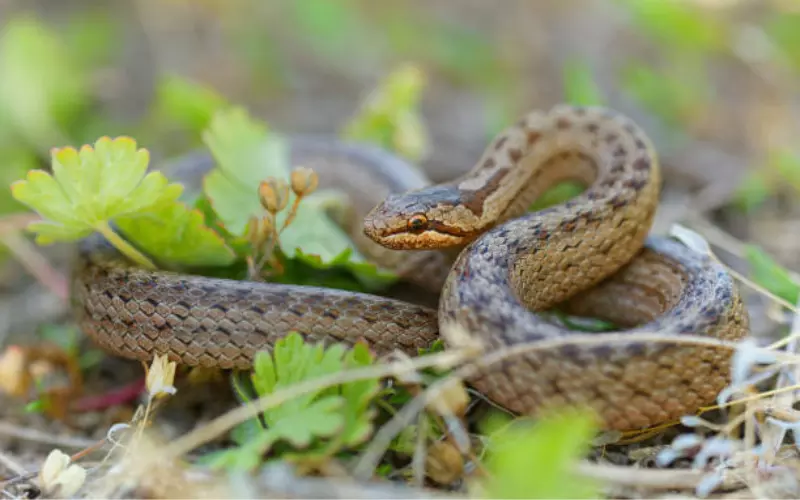
The smooth snake is a type of animal that belongs to the reptile group. Reptiles are cold-blooded creatures that have scaly skin and lay eggs. The smooth snake, also known as Coronella austriaca, is a nonvenomous snake found in some parts of Europe. It is known for its smooth and shiny scales, which give it its name.
The smooth snake is classified under the Colubridae family, a large group of snakes that includes around two-thirds of all snake species. Within this family, the smooth snake is placed in the genus Coronella. The genus Coronella consists of three species, including the smooth snake. This genus is further classified under the subfamily Colubrinae, which contains many other snake species.
The smooth snake is small and slender, typically measuring 50 to 70 centimetres. It has a slender body and a distinctive reddish-brown colour with dark spots along its back. It is mainly found in grassy habitats, such as heaths, meadows, and forest edges. The smooth snake feeds on small animals like lizards, frogs, and occasionally small mammals.
The smooth snake is a species of nonvenomous snake found in Europe. It belongs to the reptile group and is classified under Colubridae, Coronella, and subfamily Colubrinae. It is a small, slender snake known for its smooth and shiny scales. The smooth snake lives in grassy habitats and feeds on small animals.
Types of Smooth Snake

1. Grass Snake: One of the most common smooth snakes. Found in grassy areas near water. It can grow up to 1.2 meters long. Eats amphibians, fish, and small mammals. Non-venomous, harmless to humans.
2. Ringneck Snake: Known for the distinctive yellow or orange ring around its neck. Prefers moist environments such as woodlands and marshes. It feeds on insects, small reptiles, and amphibians. Non-venomous poses no threat to humans. It has a slender body and grows up to 40 centimetres long.
3. Coachwhip Snake: Named for its physical resemblance to a whip. Primarily found in arid regions. It feeds on small mammals, birds, and lizards. It can reach lengths of up to 2.7 meters. Extremely fast and agile, but non-venomous.
4. Green Tree Snake: Also known as the vine snake or emerald tree boa. Lives in trees and shrubs in tropical rainforests. Preys on small birds, reptiles, and eggs. Features a bright green colour, aiding in camouflage. Non-venomous with a slender body reaching 1.5 meters.
5. Garter Snake: Commonly found across North America. Typically inhabits grasslands, forests, and wetlands. It feeds on small fish, frogs, and earthworms. Non-venomous and harmless to humans. It is recognizable by the yellow or white stripes along its body.
6. Smooth Snake: Native to parts of Europe and North Africa. Prefers grasslands, heathlands, and meadows. Feeds on small reptiles, amphibians, and rodents. It is non-venomous and poses no threat to humans. Blends well with its surroundings due to its brown color.
7. Rat Snake: Found in various habitats across Asia, Europe, and North America. It is known for its ability to climb trees and enter buildings for prey. It feeds on rodents, birds, and their eggs. Non-venomous but can deliver a bite if threatened. It can grow up to 3 meters in length.
8. Water Snake: Lives near water bodies such as rivers, lakes, and ponds. Feeds on fish, amphibians, and other small aquatic animals. Non-venomous with a slim body and smooth scales. Exhibits excellent swimming and diving skills. It can be found in both freshwater and brackish habitats.
9. Whip Snake: Found in various regions worldwide, including Africa, Asia, and Australia. Lives in forests, grasslands, and scrublands. It feeds on insects, small reptiles, and rodents. Non-venomous, fast-moving, and often aggressive when threatened. They are known for their long, slender bodies and quick reflexes.
10. Rough Greensnake: Native to the United States and Canada. Prefers habitats with shrubs, meadows, and forests. It feeds mainly on insects like grasshoppers and caterpillars. Non-venomous and harmless to humans. Identified by its bright green color, long and slender body, and smooth scales.
Geographical Presence of Smooth Snake
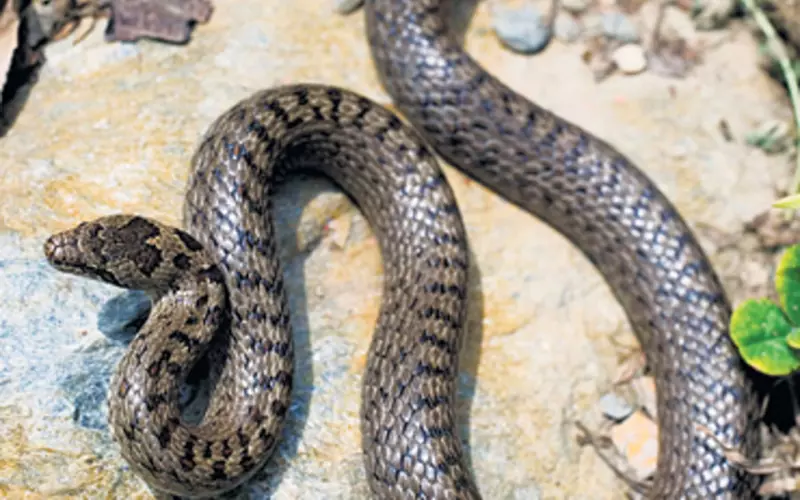
The Smooth Snake is found in the region known as Europe. This region includes the United Kingdom, France, Germany, and Italy. It is a small snake that can grow up to 70 centimetres in length and is typically brown or grey. The Smooth Snake prefers habitats with sandy or heathland soils, where it can hide and blend in with its surroundings.
However, the Smooth Snake is not found in particular areas within Europe. For example, it is not found in the northernmost parts of Europe, such as Norway, Sweden, and Finland. The climate in these areas is much colder, making it unsuitable for the Smooth Snake to survive. Additionally, the snake is absent in countries like Spain and Portugal in the south and eastern European countries like Romania and Bulgaria.
The absence of the Smooth Snake in certain regions can be attributed to various factors. One of the main reasons is the climate and temperature differences. The snake prefers warmer climates, and therefore, it does not thrive in colder regions. Another reason could be the availability of suitable habitats. The Smooth Snake requires sandy or heathland soils, which may not be prevalent in some parts of Europe. Additionally, specific geographic barriers, such as mountains or bodies of water, can limit the Smooth Snake’s distribution in specific regions.
Scientific Name of Smooth Snake
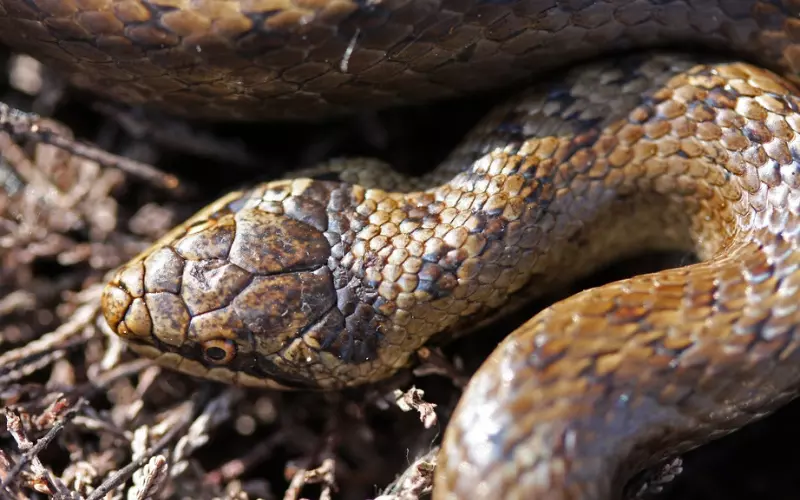
The scientific name for the smooth snake is Coronella austriaca. The smooth snake is a type of non-venomous snake that can be found in some areas of Europe. It is known for its smooth and shiny appearance, which gives it its name. The snake is slender and can grow about 50 to 70 centimetres long.
Smooth snakes can be found in various habitats, including grasslands, heathlands, and woodland areas. They are skilled at hiding and can often burrow in the soil or under rocks. The snake is mainly active during the daytime and feeds on small creatures like lizards, mice, and insects.
One interesting fact about the smooth snake is that it is a protected species in many European countries. This is because the population of smooth snakes has been declining due to habitat loss and fragmentation. Efforts are being made to conserve and protect their habitats from further decline. It is essential to protect these creatures as they play a vital role in maintaining the balance of their ecosystems.
Diet of Smooth Snake
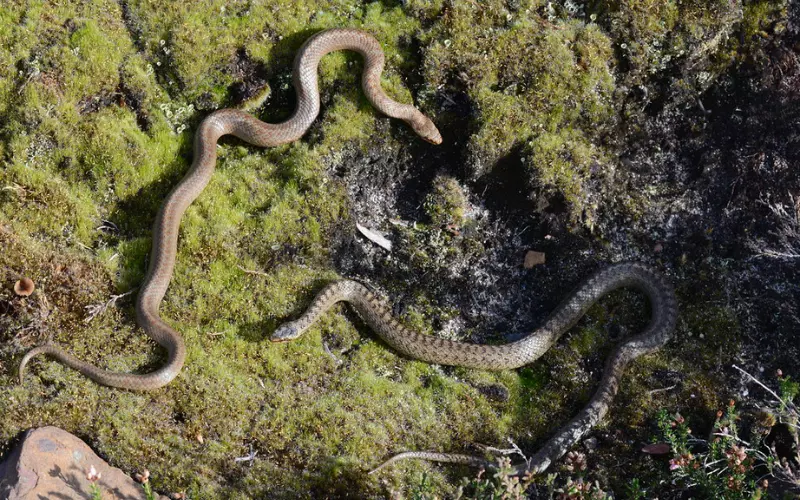
The diet of the smooth snake is quite simple. It mainly eats other small animals like lizards, frogs, and sometimes even small birds. The smooth snake is a carnivore, which means it only eats meat and doesn’t eat any plants or fruits.
When the smooth snake finds its prey, it will swiftly catch it with its long, slender body. It uses its sharp teeth to grip onto the prey and then swallows it whole. Since the smooth snake doesn’t have venom like some other snakes, it squeezes its prey tightly to prevent it from escaping.
The smooth snake is well adapted to hunting and eating its preferred food. It has a flexible jaw that allows it to consume animals larger than its head. After it eats, it can go for a long time without food again. This is because the smooth snake has a slow metabolism, meaning it doesn’t need to eat as often as other animals.
The smooth snake’s diet consists mainly of small animals such as lizards, frogs, and sometimes birds. It catches its prey by using its long body and sharp teeth. With its flexible jaw and slow metabolism, the smooth snake can eat larger animals and go without eating again.
Locomotion of Smooth Snake
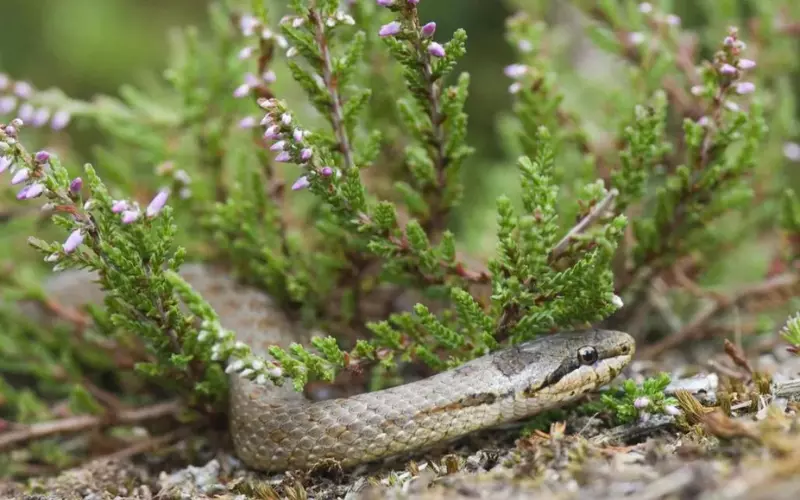
The smooth snake, a kind of reptile, moves in a unique way called locomotion. It uses its body muscles and scales to slide along the ground. To do this, it contracts its muscles and stretches its body, making it longer and thinner. Then, it pushes its belly scales against the ground and moves forward. This smooth movement allows the snake to travel in a straight line.
The smooth snake’s locomotion differs from other animals, like dogs or cats, which use their legs to walk or run. Instead, the smooth snake uses its whole body to glide along the ground. The snake can move quietly and quickly through different environments like grass or sand using this technique. It knows how to adapt and move smoothly in its surroundings, making it a skilled and efficient traveller.
Social and Sexual Behaviour of Smooth Snake
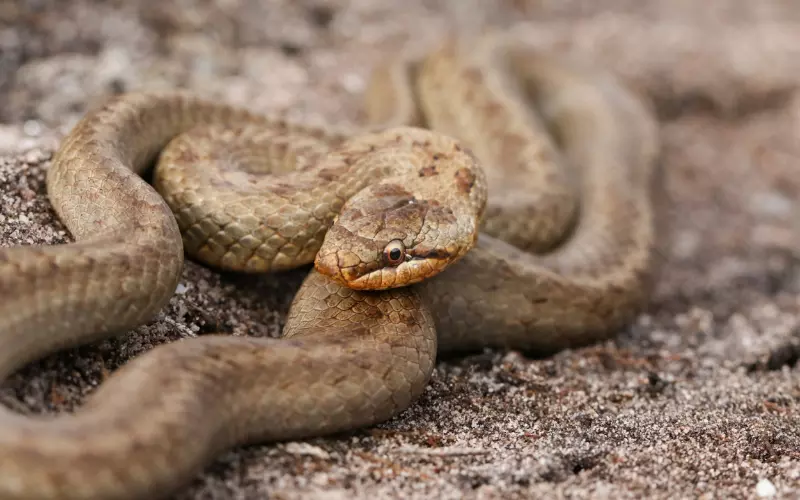
The smooth snake, a reptile type, has interesting social and sexual behaviour. These snakes enjoy living in groups called colonies. In these colonies, the snakes usually stay together and cooperate. They help each other hunt for food and protect their territory. Living in a group allows them to have a better chance of survival.
Regarding sexual behaviour, smooth snakes have a unique way of reproducing. The male snake will court the female snake by performing different actions, such as rubbing against her body. Once the female is ready to mate, the male will use his tail to place his sperm inside the female’s body. This is called internal fertilization. After a while, the female snake will lay eggs, and they will hatch into baby snakes.
Overall, smooth snakes are social creatures like living together in colonies. They work together to find food and protect their territory. Regarding sexual behaviour, the male smooth snake courts the female before mating. Then, the female lays eggs, which later hatch into baby snakes.
Reproduction and Lifecycle of Smooth Snake
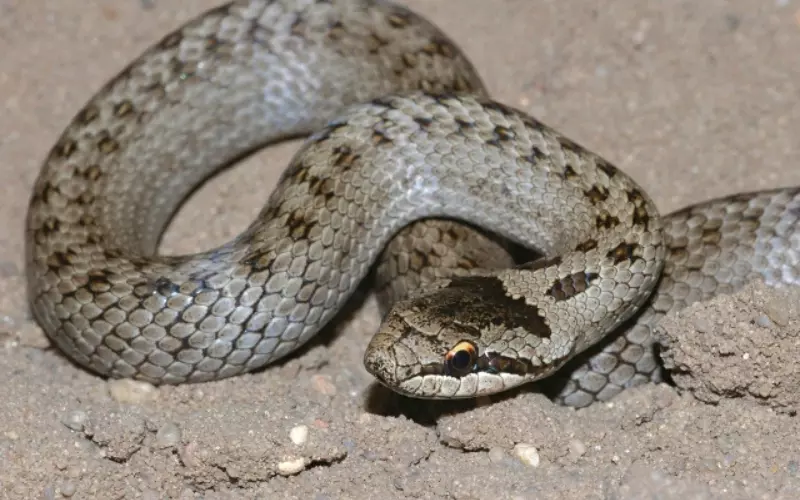
The smooth snake is a fascinating animal that uses a unique process to reproduce and complete its life cycle. Like other reptiles, smooth snakes lay eggs to have babies. The female smooth snake, called a nest, finds a safe and warm place to lay her eggs. She often chooses spots like rotting logs or sandy soil to create a cosy nest for her eggs. The female can lay up to 6-12 eggs at a time. After laying her eggs, the female snake leaves the nest and does not care for the eggs or the babies. The eggs are in danger from predators and bad weather, so they must rely on the warmth of the environment to develop properly.
It takes about 2-3 months for the eggs to hatch. Once the baby snakes hatch from their eggs, they must fend for themselves from the start. They are born fully independent and need to find food and shelter independently. The young snakes are often preyed upon by birds and other predators, so they must be quick and hide well to survive. Slowly, these baby snakes grow into adulthood and start the cycle anew by finding their mate and laying their eggs.
Smooth snakes reproduce by laying eggs; the females do not care for the eggs or babies. The eggs hatch after a few months, and the baby snakes must learn to survive independently from birth. They face many challenges, but if they are lucky enough to survive, they will grow into adult snakes and continue the reproduction cycle.
Threats to Smooth Snake
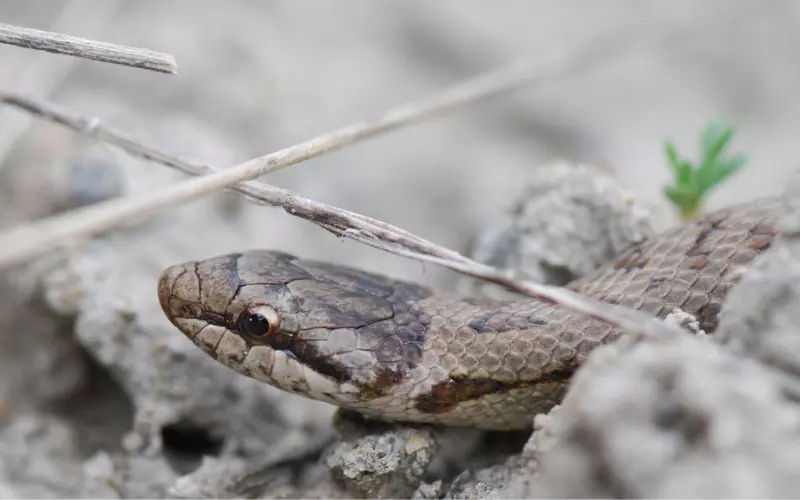
The smooth snake, a slithery reptile found in some parts of Europe, faces several threats that put its survival at risk. One major threat is habitat loss. As humans continue to develop land for agriculture, infrastructure, and housing, the natural habitats of smooth snakes are being destroyed. This means they have less space to live, find food, and reproduce.
Another threat to the smooth snake is accidental killing. These snakes often get mistaken for other dangerous or venomous species, such as adders. When people encounter a smooth snake, they may fear it and try to harm or kill it out of panic. This misunderstanding and fear can lead to a decline in the smooth snake population.
Lastly, pollution poses a significant threat to smooth snakes. Pesticides and pollutants in the environment can contaminate their food sources, such as small mammals and reptiles. When smooth snakes consume these contaminated prey, they can suffer from illness or even death. Likewise, pollution directly affects the water bodies in their habitats, making it difficult for smooth snakes to find clean water to drink.
These threats – habitat loss, accidental killing, and pollution – are severe challenges for the smooth snake. To ensure their survival, we must raise awareness about preserving their natural habitats, educate people about distinguishing between various snake species, and advocate for responsible use of pesticides and conservation efforts. We can help protect this fascinating species by addressing these threats and maintaining a healthy ecosystem balance.
Population of Smooth Snake

The population of smooth snakes is not very high and is estimated to be around 50,000 to 100,000 individuals. These snakes are found mainly in Europe, particularly in the United Kingdom and Scandinavia. In many countries, they are not very common and are considered a protected species.
Unfortunately, there have been cases where the smooth snake has become extinct in certain areas. This means that there are no more smooth snakes left in those places. The reasons for their extinction can vary, but it is often due to habitat loss. As humans develop land for farming or building houses, the environment becomes unsuitable for snakes. Pollution and the introduction of non-native species can also contribute to their decline.
We must take care of the smooth snake population and protect their habitats. This can be done by preserving natural areas, reducing pollution, and creating awareness about the importance of these snakes in the ecosystem. By doing so, we can help ensure that future generations can still have the opportunity to see and appreciate these beautiful creatures in the wild.
Conclusion
The Smooth Snake, a fascinating creature in Europe, has a rich history and many interesting facts. This blog post delved into this particular snake’s size, habitat, and classification. With its slender body and smooth scales, the Smooth Snake is truly a wonder of the animal kingdom.
When it comes to size, this snake is relatively modest compared to its counterparts. Growing up to 75 centimetres long, it may not be the longest snake out there, but it still captivates with its graceful appearance. The Smooth Snake is well-known for its unique habitat preference, favouring dry and sandy areas like heathlands and coastal dunes. This choice of environment allows it to camouflage and blend seamlessly into its surroundings.
Regarding classification, the Smooth Snake falls into the reptile category, a branch of the animal kingdom. While it may resemble its nasty cousin, the adder, it is a non-venomous species. This distinction is crucial to understanding and appreciating the delicate nature of this remarkable animal.
The Smooth Snake is a remarkable creature, with its history, size, habitat, and classification making it a true wonder of the animal kingdom. Its slender body and smooth scales make it easily distinguishable, and its preference for dry and sandy areas only adds to its uniqueness. While similar in appearance to the venomous adder, the Smooth Snake is a non-venomous species, highlighting the diversity and intricacies within the reptile family. As we explore the world of animals, let us appreciate and cherish the beauty of creatures like the Smooth Snake.
Frequently Asked Questions about Smooth Snake (FAQ’s)
What is a Smooth Snake?
The Smooth Snake (Coronella austriaca) is a non-venomous snake species in Europe.
What is the appearance of a Smooth Snake?
Smooth Snakes have slender bodies, usually 60-80 centimetres long, with smooth and shiny scales. They are typically brown or greyish, with a dark stripe running down their back.
Where can Smooth Snakes be found in the wild?
Smooth Snakes are native to various parts of Europe, including countries such as England, France, the Netherlands, Spain, and Switzerland.
What is the preferred habitat of Smooth Snakes?
Smooth Snakes can be found in a range of habitats, including heathlands, grasslands, wetlands, and open woods, as long as sufficient vegetation cover and suitable prey.
Are Smooth Snakes venomous?
No, Smooth Snakes are non-venomous. They do not possess venom glands or fangs.
What do Smooth Snakes eat?
Smooth Snakes feed on small reptiles, such as lizards and snakes, and amphibians, like frogs and toads.
How do Smooth Snakes catch their prey?
Smooth Snakes are constrictors, which means they subdue their prey by coiling around it and squeezing until it suffocates. They then swallow the prey whole.
Are Smooth Snakes dangerous to humans?
Smooth Snakes are entirely harmless to humans. They do not pose any threat and tend to avoid human presence.
Do Smooth Snakes hibernate?
Yes, Smooth Snakes hibernate during the winter months. They seek underground burrows, log piles, or other suitable shelters for the colder period.
How long have Smooth Snakes lived?
Smooth Snakes have an average lifespan of around 10-15 years in the wild, but some individuals may live longer.
Can Smooth Snakes Swim?
Yes, Smooth Snakes are competent swimmers. They can quickly move through water to access new habitats or escape threats.
Do Smooth Snakes lay eggs?
Yes, Smooth Snakes are oviparous, meaning they lay eggs. The eggs are generally laid in rotting vegetation or under logs and rocks.
How many eggs does a Smooth Snake usually lay?
A female Smooth Snake typically lays between 4 to 12 eggs in a single clutch.
Are Smooth Snakes a protected species?
Due to their declining populations, Smooth Snakes are protected by various conservation laws in several countries.
What are the main threats to Smooth Snakes?
The main threats to Smooth Snakes include habitat loss and degradation, fragmentation, illegal collection for the pet trade, road mortality, and climate change impacts.

Hi there! I’m Morgan Gutierrez, and I love animals! I work as a Seasonal Animal Care Specialist at Brookfield Zoo and also teach people about animals, which is super fun. I studied at Valparaiso University in Lockport, Illinois, where I learned even more about these amazing creatures.
I’m not just about taking care of animals; I write articles about them, too! I explore and share many interesting animal stories, from cute kittens to giant elephants.
In the past, I’ve worked with veterinarians, helped with research, and even been an Animal Ambassador, bringing animals closer to people. Animals are my passion, and I enjoy helping others learn about them. So, if you ever want to know about animals, feel free to ask. I’ll explain it in a way that’s easy to understand, just like talking to a friend!

